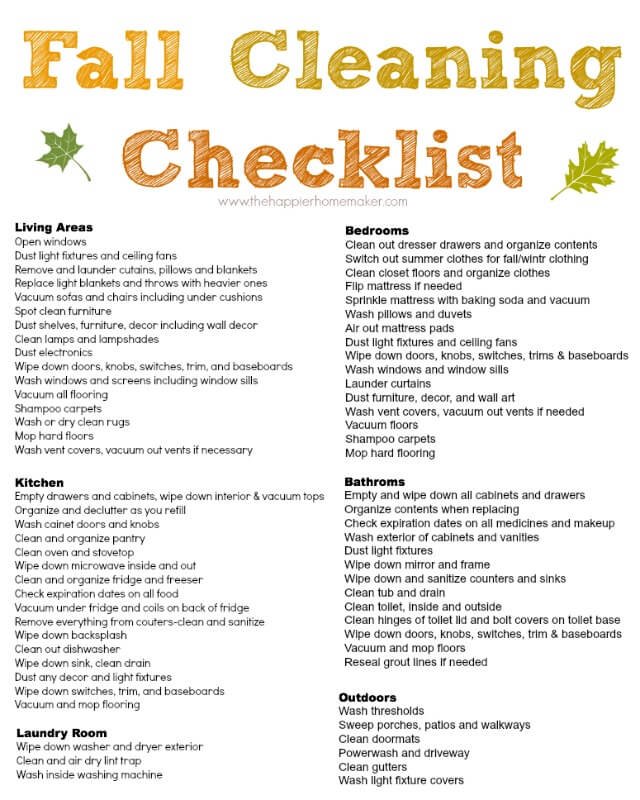Winter Prep With Mean Green + Free Fall Printable
/
Winter is on my mind and I know it's going to be here as early as November! I have started tackling those much needed to get done projects around the house. Here is what is in my tool kit!
1. Install weatherstripping
The high-tech approach is to use a laser infrared thermal gun to detect cold drafts. The low-tech way is to move a lit candle around the door frame; the flame will blow toward you when there is a draft.
Seal a drafty door by installing foam or felt weatherstripping inside the door frame. Ask at your hardware store for the correct products and installation instructions.
2. Install a door sweep
Use a door sweep to stop drafts from entering your home under an exterior door. A sweep is a flexible piece of rubber or plastic that’s held to the door’s lower edge by a strip of aluminum.
3. Use the Right Cleaning Products

4. Close the damper
Heated or cooled air flies up the chimney when you leave the fireplace damper open. Make it a habit to shut the flue after the fireplace has cooled.
5. Add attic insulation
Insulation keeps warm air inside in the winter and expensively cooled air inside in the summer.
“Typically, houses in warm-weather states should have an R-38 insulation in the attic, whereas houses in cold climates should have R-49,” says This Old House, explaining how to install batting-type insulation.
Insulating an attic, basement or crawl space is moderately difficult, and beginners should hire a professional. If you do, ask if you can perform parts of the job to reduce the cost.
Admittedly, insulating is not a cheap job. But the payback can be huge, and you may find rebates and financial incentives. See Energy.gov’s guide to sources and to a calculator to estimate the return on an insulation investment.
6. Programmable thermostat
A programmable thermostat can save up to $180 a year on fuel costs, according to EnergyStar. The thermostat can save fuel by automatically lowering (or raising) your home’s temperature while you’re away. It also keeps temperatures consistent, saving fuel.
Do not use a programmable thermostat with a heat pump unless the thermostat is meant for use with heat pumps.
7. Seal furnace ducts
Heating ducts typically waste 20 to 30 percent of the heated air they carry, losing it to leaks and poor conduction, says EnergyStar. Leaky heat ducts mean higher utility bills and a house that’s harder to keep warm.
Appliances like water heaters and furnaces can cause the buildup of dangerous gases like carbon monoxide through a process called backdrafting, according to EnergyStar. Sealing leaks can reduce this risk, but before you start the job ask a heating contractor if you need to have a combustion safety test done first.
8. Replace furnace filters monthly
You'll want to check your furnace or have it serviced before winter. There is nothing worse than your heat er breaking in the middle of winter!
Check and replace the furnace filter monthly in winter or every three months while the system is in operation. Your owner’s manual will tell you where it’s located. Hold the filter up to the light: If you can’t see light through it, you need a new one.
9. Keep your furnace running smoothly
Servicing your furnace regularly helps you catch problems before expensive breakdowns, prolong the furnace’s life and keep it running more efficiently.
Newer furnaces need professional servicing every two years. Older units require annual servicing.
Check your furnace’s manual to see which specific steps are recommended. Ask friends and colleagues for names of good technicians. Find one or two you trust and stick with them.
10. Insulate the hot water heater
Save on fuel by wrapping older water heaters in a blanket of insulation, an easy DIY project that even a beginner can do. Your utility company has instructions. When insulating a gas or propane water heater, do not cover the burner access.
11. Lower the hot water temperature
Hot water heaters typically are set at 140 degrees. Lower the temperature on yours to 120 for fuel savings. You’ll reduce the chance of accidental burns, and the water still will be plenty hot for bathing, washing clothes and doing dishes.
12. Plug household leaks
Tour your home, inside and out, including the basement, to find and fill cracks and gaps in siding, windows and foundation. Note locations of problems you can’t fix right away.
Use caulk for small cracks and the foam sealer for bigger gaps. Inside the home use a candle flame or digital thermometer to find where cold air is entering. Pay attention to door frames, windows, skylights, chimneys and vents. Also check openings around appliance vents, electrical and plumbing fixtures and furnace ducts and check the top of basement walls where the foundation meets wood.
13. Insulate hot-water pipes
Insulate the hot-water pipes in your basement or crawl space by snapping foam sleeves on them. You’ll find pre-slit, hollow-core, flexible foam pipe insulation at hardware stores. Make a note of your pipes’ diameters and lengths, and bring the measurements when you shop.
14. Set ceiling fan blades for winter
Set fan blades to move clockwise in winter, and run fans slowly. The idea is to lift cool air to the ceiling and push heated air down where you can enjoy it. Some fans have a remote control or remote switch. Otherwise, use a ladder and manually adjust the small toggle switch on the fan body. Now set the thermostat a notch lower and enjoy the warmth.
15. Insulated window coverings
Pick up insulated curtains, drapes or shades before winter. Draw window coverings at night and when you’re away to conserve heat in the home. In hot weather, draw window coverings in the morning to keep the house cool, saving money on air conditioning.











